Tag Archives: artificial intelligence
Linear Regression in Machine Learning: Python Examples
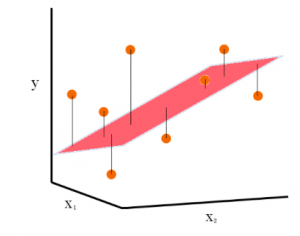
Last updated: 15th Dec, 2023 In this post, the linear regression concepts in machine learning is explained with multiple real-life examples. Two types of regression models (simple/univariate and multiple/multivariate linear regression) are taken up for sighting examples. In addition, Python code examples are used for demonstrating training of simple linear and multiple linear regression models. In case you are a machine learning or data science beginner, you may find this post helpful enough. You may also want to check a detailed post – What is Machine Learning? Concepts & Examples. What is Linear Regression? Linear regression is a machine learning concept that is used to build or train the models …
R-squared in Linear Regression Models: Concepts, Examples
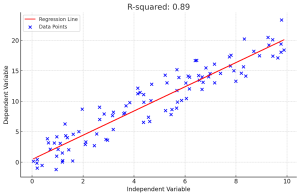
In linear regression, R-squared (R2) is a measure of how close the data points are to the fitted line. It is also known as the coefficient of determination. Understanding the concept of R-squared is crucial for data scientists as it helps in evaluating the goodness of fit in linear regression models, compare the explanatory power of different models on the same dataset and communicate the performance of their models to stakeholders. In this post, you will learn about the concept of R-Squared in relation to assessing the performance of multilinear regression machine learning model with the help of some real-world examples explained in a simple manner. Before doing a deep dive, …
Machine Learning Bias Explained with Examples
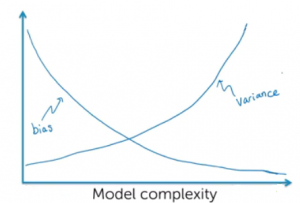
In the artificial intelligence (AI) / machine learning (ML) powered world where predictive models have started getting used more often in decision-making areas, the primary concerns of policy makers, auditors and end users have been to make sure that these systems using the models are not making biased/unfair decisions based on model predictions (intentional or unintentional discrimination). Imagine industries such as banking, insurance, and employment where models are used as solutions to decision-making problems such as shortlisting candidates for interviews, approving loans/credits, deciding insurance premiums etc. How harmful it could be to the end users as these decisions may impact their livelihood based on biased predictions made by the model, thereby, …
Data Science / AI Team Structure – Roles & Responsibilities
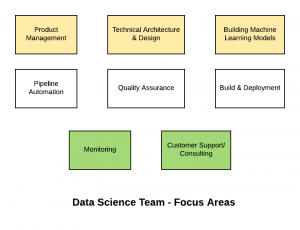
Setting up a successful artificial intelligence (AI) / data science or advanced analytics practice or center of excellence (CoE) is key to success of AI in your organization. In order to setup a successful data science COE, setting up a well-organized data science team with clearly defined roles & responsibilities is the key. Are you planning to set up the AI or data science team in your organization, and hence, looking for some ideas around data science team structure and related roles and responsibilities? In this post, you will learn about some of the following aspects related to the building data science/machine learning team. Focus areas Roles & responsibilities Data Science Team – Focus …
Pandas – How to Concatenate Dataframe Columns

Quick code sample on how to concatenate the data frames columns. We will work with example of Boston dataset found with sklearn.datasets. One should note that data frames could be concatenated by rows and columns. In this post, you will learn about how to concatenate data frames by columns. Here is the code for working with Boston datasets. First and foremost, the Boston dataset will be loaded. Once loaded, let’s create different different data frames comprising of data and target variable. This above creates two data frames comprising of data (features) and the values of target variable. Here are the snapshots. Use the following command to concatenate the data frames. …
Neural Network Architecture for Text-to-Speech Synthesis
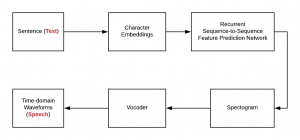
In this post, you would learn about a neural network reference solution architecture which could be used to convert the text to speech. The neural network solution architecture given in this post is based on deep learning (autoencoder network (encoder-decoder) with attention). Neural Network Reference Architecture for Text-to-Speech Synthesis In the solution architecture diagram (figure 1) depicted below, the following is described: Sentences are first converted into character embeddings. Character embeddings are numeric representations of words. Numeric representations of each of the words could be used to create numeric representations of higher-level representations like sentences/paragraphs/documents/etc. Character embeddings are next fed into recurrent sequence-to-sequence feature prediction network with attention. The sequence-to-sequence …
Reverse Image Search using Deep Learning (CNN)

In this post, you will learn about a solution approach for searching similar images out of numerous images matching an input image (query) using machine learning / deep learning technology. This is also called a reverse image search. The image search is generally searching for images based on keywords. Here are the key components of the solution for reverse image search: A database of storing images with associated numerical vector also called embeddings. A deep learning model based on convolutional neural network (CNN) for creating numerical feature vectors (aka embeddings) for images A module which searches embeddings of an input image (query) from the image database based on the nearest neighbor …
Why Data Scientists Must Learn Statistics?
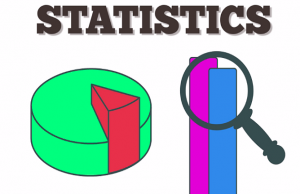
In order to understand the need for data scientists to be very good at the statistical concepts, one needs to clearly understand some of the following: Who are data scientists? What is the need for statistics in data scientists’ day-to-day work? Who are Data Scientists? Data Scientists are the primarily Scientists who do experiments to find some of the following: Whether there exists a relationship between data Whether the function approximated (machine learning or statistical learning model) from a given sample of data could be generalized for the entire population In case there are multiple function approximations for predicting outcomes given a set of input, which one of the function approximation …
What, When & Why of Regularization in Machine Learning?
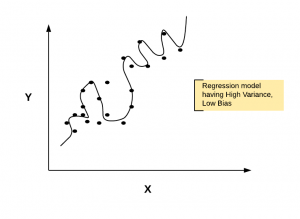
In this post, we will try and understand some of the following in relation to regularizing the regression machine learning models to achieve higher accuracy and stable models: Background What is regularization? Why & when does one need to adopt/apply the regularization technique? Background At times, when one is building a multi-linear regression model, one uses the least squares method for estimating the coefficients of determination or parameters for features. As a result, some of the following happens: Often, the regression model fails to generalize on unseen data. This could happen when the model tries to accommodate for all kind of changes in the data including those belonging to both …
Unit Tests & Data Coverage for Machine Learning Models
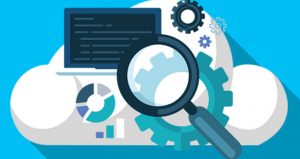
This post represents thoughts on what would it look like planning unit tests for machine learning models. The idea is to perform automated testing of ML models as part of regular builds to check for regression related errors in terms of whether the predictions made by certain set of input data vectors does not match with expected outcomes. This brings up some of the following topics for discussion: Why unit testing for machine learning models? What would unit tests for machine learning models mean? Data coverage or code coverage? Why unit testing for Machine Learning models? Once a model is built, the challenge is to monitor the performance metrics of the models …
13 Programming Languages used for Machine Learning
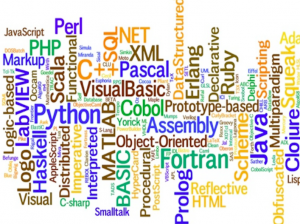
In this post, you will learn about different programming languages which can be used to create (train) machine learning models to solve supervised and unsupervised learning problems. Here are the top 13 programming languages used for machine learning: R Language: R is one of the most popular programming language and environment for statistical computing and graphics. Python: There are some of the following Python libraries which makes it easy to create machine learning/deep learning models: Scikit-learn library (Classical machine learning models): Packages such as NumPy, SciPy, Pandas are very useful and helpful in creating supervised and unsupervised learning models. Deep learning models using python libraries provided by Tensorflow, PyTorch, Theanos, CNTK, …
Top 5 Machine Learning Introduction Slides for Beginners
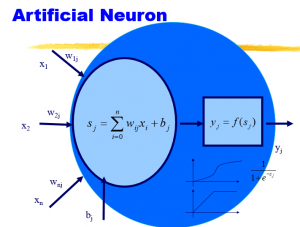
In this post, you will get to know a list of introduction slides (ppt) for machine learning. These slides could help you understand different types of machine learning algorithms with detailed examples. One or more slides from the following list could be used for making presentations on machine learning. If you are looking out for topics to be included in the machine learning course for your internal training purpose in your organization, the details presented below might turn out to be very helpful. If you are starting on learning data science, these could be good slides. Machine Learning Overview Machine Learning: An Overview: The slides present introduction to machine learning …
Andrew NG Machine Learning Coursera Videos
In this post, you will get to know the list of Andrew NG Machine Learning Coursera Videos. Here is the information: Youtube playlist of machine learning videos which are same as that of Andrew NG machine learning course on Coursera. One could use Internet Download Manager (IDM) to download these videos. Use Coursera-dl script found on Github to download the machine learning course. The script makes it easier to batch download lecture resources (e.g., videos, ppt, etc) for Coursera classes. Given one or more class names and account credentials, it obtains week and class names from the lectures page, and then downloads the related materials into appropriately named files and directories. Use AcademicTorrents website …
MIT OCW Machine Learning Courses Information

In this post, you get the information related to MIT OCW machine learning course from MIT OpencourseWare (OCW). They use Matlab as the primary programming environment. The documentation for Matlab could be found on this page, Matlab Documentation. The course is provided by Electrical Engineering and Computer Science department. Other related courses which could be useful for data scientist / machine learning engineers are some of the following: Introduction to probability (Video lectures, Lecture notes) Introduction to computational thinking and data science (Video lectures, Lecture notes) Lecture Notes – Machine Learning Course Lecture notes could be found on the following topics: Introduction, linear classification, perceptron update rule (PDF) Perceptron convergence, generalization (PDF) …
Machine Learning – Insurance Applications Use Cases

In this post, you will learn about some of the following insurance applications use cases where machine learning or AI-powered solution can be applied: Insurance advice to consumers and agents Claims processing Fraud protection Risk management AI-powered Insurance Advice to Consumers & Agents Insurance Advice to Consumers: Machine learning models could be trained to recommend the tailor made products based on the learning of the consumer profiles and related attributes such as queries etc from the past data. Such models could be integrated with Chatbots (Google Dialog flow, Amazon Lex etc) applications to create intelligent digital agents (Bots/apps) which could understand the intent of the user, collect appropriate data from the user (using prompts) …
Guidelines for Creating an Ethical AI Framework
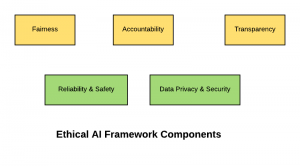
In this post, you will learn about how to create an Ethical AI Framework which could be used in your organization. In case, you are looking for Ethical AI RAG Matrix created with Excel, please drop me a message. The following are key aspects of ethical AI which should be considered for creating the framework: Fairness Accountability Transparency Reliability & Safety Data privacy and security Fairness AI/ML-powered solutions should be designed, developed and used in respect of fundamental human rights and in accordance with the fairness principle. The model design considerations should include the impact on not only the individuals but also the collective impact on groups and on society at large. The following represents some …
I found it very helpful. However the differences are not too understandable for me